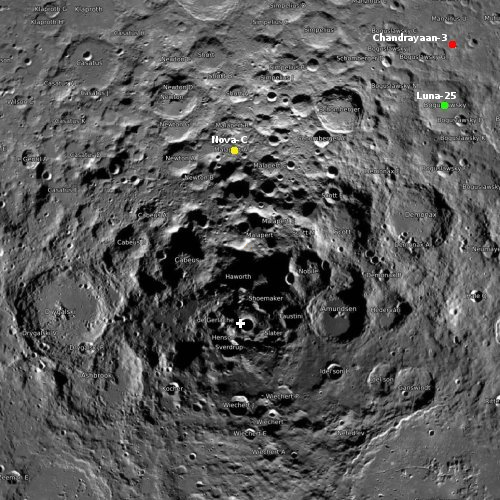Astronomers downsize their proposal for rebuilding Arecibo
Faced with little interest from the National Science Foundation to spend the half a billion dollars required for their initial proposal to rebuild the Arecibo radio telescope, astronomers have now downsized their proposal significantly.
[I]n 2021 Anish Roshi, the observatory’s head of radio astronomy, unveiled a proposal to replace the telescope with a phased array of 1112 parabolic dishes each 9 m in diameter, placed on a tiltable, plate-like structure. This new facility, with an estimated cost of $454m, would provide the same a collecting area as a 300 m parabolic dish. “It would have a much wider sky coverage and would offer capabilities for radio astronomy, planetary, and space and atmospheric sciences,” Roshi says. “It would be a unique instrument for doing science that competitive projects couldn’t do.”
A lack of support from the NSF, however, has forced researchers to go back to the drawing board to make the array “more cost-effective both for construction and operation” as Roshi puts it. In the revised proposal, submitted to arXiv late last month, his team now envisions a downsized version of the original concept. Dubbed NGAT-130, it would consist of 102 dishes each 13 m in diameter that would in combination have a collecting area equivalent to a single 130 m dish.
No cost estimates are as yet available for this new proposal. Nor has the NSF expressed any opinion on whether it is even interested. At the moment its only action at Arecibo has been to propose converting the observatory into an education center, one that is located far from anything, is hard to reach, and will likely see few students or visitors.
Faced with little interest from the National Science Foundation to spend the half a billion dollars required for their initial proposal to rebuild the Arecibo radio telescope, astronomers have now downsized their proposal significantly.
[I]n 2021 Anish Roshi, the observatory’s head of radio astronomy, unveiled a proposal to replace the telescope with a phased array of 1112 parabolic dishes each 9 m in diameter, placed on a tiltable, plate-like structure. This new facility, with an estimated cost of $454m, would provide the same a collecting area as a 300 m parabolic dish. “It would have a much wider sky coverage and would offer capabilities for radio astronomy, planetary, and space and atmospheric sciences,” Roshi says. “It would be a unique instrument for doing science that competitive projects couldn’t do.”
A lack of support from the NSF, however, has forced researchers to go back to the drawing board to make the array “more cost-effective both for construction and operation” as Roshi puts it. In the revised proposal, submitted to arXiv late last month, his team now envisions a downsized version of the original concept. Dubbed NGAT-130, it would consist of 102 dishes each 13 m in diameter that would in combination have a collecting area equivalent to a single 130 m dish.
No cost estimates are as yet available for this new proposal. Nor has the NSF expressed any opinion on whether it is even interested. At the moment its only action at Arecibo has been to propose converting the observatory into an education center, one that is located far from anything, is hard to reach, and will likely see few students or visitors.












